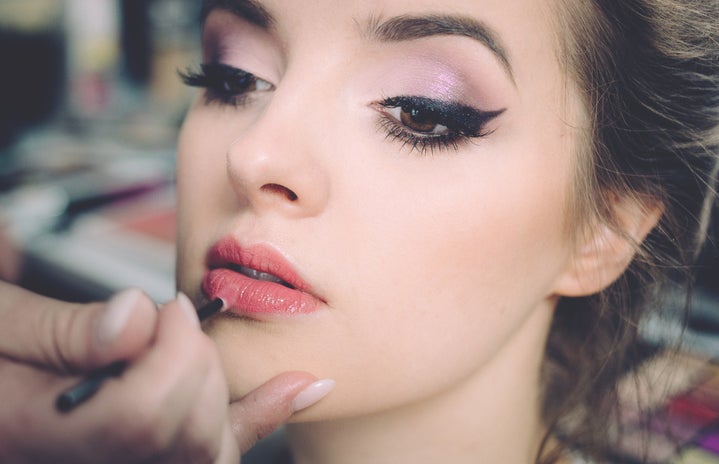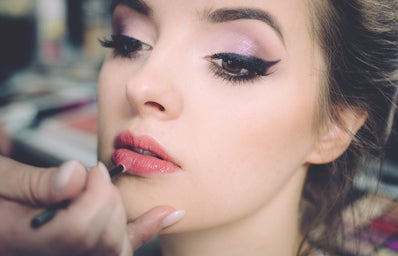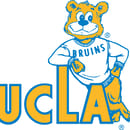Picture this: eleven year old me, astonished at the amount of acne blooming across my friends’ faces as puberty hits them all at the same time. I luckily had baby smooth skin: no blemishes, no pimples, no hyperpigmentation and no uneven skin.
Throughout high school, some people continued thier battle with acne, while I consistently (to the irritation and envy of some of my friends) had pretty good skin. Then senior year hit, and the acne came after me. Everyone was outgrowing their awkward stages and starting to look more mature and grown up, especially with their clear skin. As for me, new pimples greeted me almost on a daily basis.
Back then, I didn’t know anything about basic skincare. When I was younger, I used to wash my face with a gentle cleaner once a day in the shower, then pat on some moisturizer in the morning and at night. With my late puberty acne, I was popping pimples left and right, hoping the faster I popped them, the faster they’d go away.
Contrary to my expectation, the acne stayed for a long time, and it gradually got worse. I remember having pimples at graduation and at prom, covered by makeup but still unmistakably present. I wished fervently if I ignored it for long enough it would disappear on its own.
It was not until after my first quarter in college that I acknowledged that my acne was a problem that was not going away on its own. My mother had already visited a dermatologist for a few years for her skin, so she referred me to her. The dermatologist, an experienced, elderly Filipino woman, took one look at my face and my back acne, and said, “Your acne is quite serious.” She told me the acne came from an internal problem deep in my body.
There it was: the words I had been denying for over a year. It looked like the acne was here to stay for a while. The first few months of treatment, my mom balked at the possibility of oral medication for acne, so I stuck to prescription topical medication. I was prescribed a face cleanser, moisturizer, Aczone and Epiduo, a well-known benzoyl peroxide. I also added sunscreen to my skin routine since sun exposure can lead to acne scars.
When I occasionally went home from college, I got chemical peels, some with salicylic acid, some with glycolic acid. These peels were such surprising experiences. Glycolic peels felt like little ants walking across my feet—the higher the acid concentration, the itchier it was. Salicylic acid felt like my face was on fire. I have a pretty high pain tolerance, and I would only classify the salicylic acid peels as painful. It was in these moments I came to recognize that beauty actually is pain.
As a first year, someone once told me, “If I had acne, I wish it was like yours. At least your acne is all over your cheeks; it looks like you’re blushing.” I was not sure whether to take that as a compliment or an insult. I suppose it was neither. As much as I wanted to ignore the acne’s existence, it was there and people noticed.
After months with minimal change in my second year in college, I began taking an oral medication called Doryx. I took the pills for a few months, tried to wean off, but the acne returned. I went back on them again until February of 2018.
By February, I felt there was enough improvement to wean myself off the pill—I didn’t want to be on antibiotics the rest of my life. I refused to be shackled to a drug like that, but I continued my topical medication. Around this time, my prescription topical medication was also slowly running out, so I looked elsewhere to take care of my skin. For the most part, it seemed my late puberty acne was ebbing away.
I decided to deal with my acne in my own way. Going to the dermatologist was costly, and after three years, I was tired of driving an hour out of my way to take care of my skin. After years of hearing about the cult following, I decided to do some research into Korean skincare.
Korean skincare has a completely different philosophy than Western dermatologists. Dermatologists believe acne grows from foreign bacteria and excess oil coming into contact with the skin. They treat it by drying the skin out. Korean skincare is quite the opposite; it nourishes, replenishes the skin’s natural nutrients and moisturizes it.
My research into Korean skincare turned into a full blown splurge into all the different products I was missing in my skincare routine. I tried my best to follow the famous 10-step skincare routine, while still trying to use up the product I had left from my dermatologist. Doing your research and creating your own skincare is all about trial and error.
I haven’t quite gotten to double cleansing, but I have learned that exfoliating regularly is incredibly important. In my mind, it acts as a kind of mild chemical peel since it takes off the top layer of dead skin to leave smooth, new skin. I only do it once a week since I have sensitive skin that dries out and starts peeling if I’m too harsh to it. The one I’m using right now are the Bio-Peel Gauze Peeling Pads by Neogen. Another good one for the budget is the Dr. G Brightening Peeling Gel.
Another standout product is my moisturizer. I’ve only been using it for a few days, but I’m in love. It’s the Super Aqua Cell Renew Snail Cream by Missha. It’s this really light, almost gel-like consistency, and it smells heavenly. There is little to no oil in it, so it hasn’t broken me out.
The most important thing I have learned in my acne journey is to appreciate sunscreen. After years of visiting my dermatologist, she has ingrained in me that you cannot neglect sunscreen. It protects you from acne scars, hyperpigmentation and overall sun damage.
My ultimate favorite sunscreen is the EltaMD UV Clear Broad- Spectrum SPF 46 in the untainted color. It had zero oil, and it blends into the skin quickly and with no white cast. I ran out and since EltaMD products can only be found in dermatologist offices and other select locations, I am now using the All Around Safe Block Essence Sun Milk SPF 50 by Missha. It’s also light and blends in well, leaving the skin with a nice texture afterwards. I also highly recommend Supergoop!’s Skin Soothing Mineral Sunscreen SPF 40.
In my journey, I also came to see the truth that you are what you eat. It’s annoying how often I’ve heard it, but it is terribly true. Around August 2017, I stopped eating fried and oily foods, and I believe, in addition with the acne oral pills, it made a real difference in my acne. Excess oil can come from anywhere, externally or internally, and it shows on your skin.
When thinking of my late puberty acne, I like to think I wasn’t ashamed, but I suppose I was at some point. When it first started, I thought about my acne all the time. My first year in college, I used a tinted sunscreen and wore baseball hats often, hoping no one would notice my acne. It was only during my second year that skincare became so ingrained in my daily life that the shame slowly melted away.
Make sure to always be diligent in taking care of your skin. I let my acne rage on for way too long before I acknowledged it was a problem, and it took me three years to finally get my skin to a new kind of normal. I don’t have clear skin; in fact, I still have redness, acne scars and stray pimples. However, having acne doesn’t bother me nearly as much as it used to, and I accept my skin and all its flaws. Clear skin is always a goal to aspire to, but having a good skincare routine and sticking to it is the key.
Photos courtesy of Creative Commons and Kaitlyn Tang


